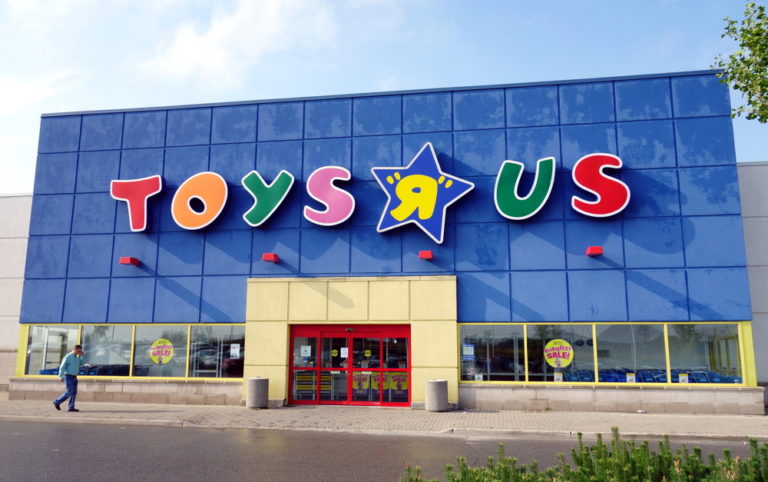Tuesday marked the last day of Toy Fair 2017 and the beginning of some great conversations and learning with the world’s best in toys!
As you may know, the toy industry as a whole has seen ample growth in the past few years, clocking in at an estimated worth of $26 billion in 2016. Yet, the toy landscape and toy-buying experience is markedly different.
We identified a couple key trends from our Toy Fair experience. First, e-commerce is taking off and enabling a more direct to consumer business experience. While mass market companies (think Walmart, Target or Toys “R” Us) traditionally have sold through physical stores, we’re seeing more brands selling through their own e-commerce sites or large specialized companies like Amazon.

Photo by AdWeek
Another trend is the introduction of digital elements into all categories of toys. The lines between digital and physical toys are blurring, as nearly all toys we saw have some sort of digital element. The takeaway here? The ability for toy companies to integrate digital elements seamlessly into their offering is critical to their success.
Take Toys “R” Us, a well known toy store that for years has been a primary source for supplying and retailing toy products around the country, for example. Recently, this store, like many other brick and mortar toy stores is undergoing financial difficulties. Just days before the New York Toy Fair, Toys “R” Us cut 250 corporate jobs, according to NPR.
Toys “R” Us once dominated malls and shopping strips across the U.S., but as trends in online shopping have been increasing and consumers have been opting out of trips to the physical store, the company has found itself struggling to keep up.
It’s clear by the company’s massive online inventory that it has tried to keep up with the spike in e-commerce sales over the past few years. However, despite the apparent availability of toys for online ordering, the company faced yet another issue in 2015: one of insufficient inventory for the quantity of orders it received in the holiday season.
While Toys “R” Us is still operating, the difficulties the company currently faces teaches an important lesson: while e-commerce can be a major asset for a consumer-driven company, it isn’t a surefire success strategy.
Although events like Toy Fair can shed helpful light on what emerging toy trends may be for the year, there’s no formula for calculating the exact demand any toy, game or item will or will not have. One of Toys “R” Us’ deciding failures was in excess, or in this case, insufficient inventory. This opens a company up to a colossal level of risk, and can result in wasted space, inventory or some disappointed kids on Christmas day. A flexible inventory can help a company easily avoid this trouble and sidestep the inevitable uncertainty of forecasting Q4 demand.
What if there was a solution that optimized inventory and streamlined planning so that efforts could be focused on new toy product design and ingenuity rather than ability to predict demand, ship and deliver? If a company operates on a MOQ1 basis, this risk is virtually eliminated. No wasted space, no wasted material, no disappointed kids. Enter PopUp Play.
On-demand manufacturing is one of the key principles our platform makes use of and is a major factor in putting our partners a step above the rest. This is where we see our future and the new norm in the toy industry: scalable, on-demand manufacturing to accommodate the next generation of consumer.
Ready to embark on the new experience with us? Contact us.